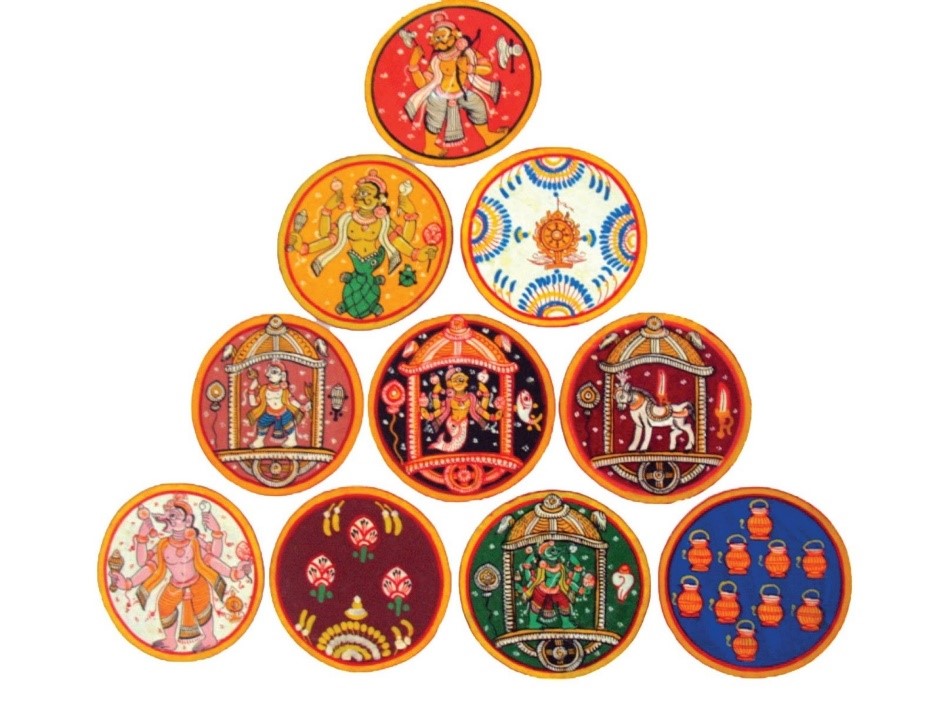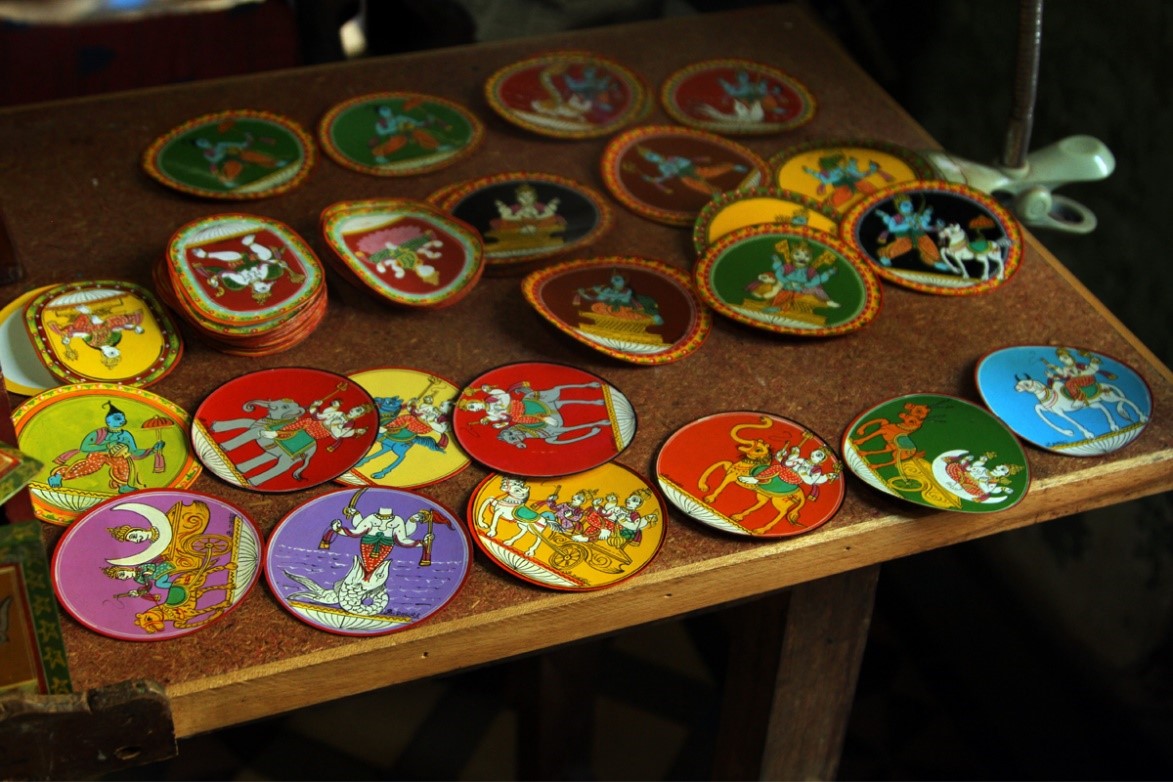Ganjifa – The Ancient Indian Card Game You Haven’t Heard About!
Originally from Persia (now Iran), Ganjifa is an ancient card game that still survives only in India.
This card game first became popular in the Mughal courts, where the courtiers could often be found playing with pretty cards made of precious tortoise shell or inlaid with ivory.
Ganjifa cards are almost instantly recognizable – while rectangular Ganjifa cards do exist and were popular in the days of yore, the circular ones are the most eye-catching and commonly found ones now. The backs of Ganjifa cards are painted with intricate designs depicting floral motifs, cultural figures, or a design that catch the artist’s fancy. The fronts are equally colourful depicting various suits and designs. Each suit of this card game is represented by a different colour and multiple variations exist in the number of suits, making this a card game for all ages.
Ganjifa cards are now collectibles, thanks to the artistry involved in making them. The British Museum, for example, has displayed Ganjifa cards originating from twelfth-century Egypt. The Topkapi Palace Museum in Istanbul, Turkey, has Egyptian Mamluk cards believed to have been originated in the 15th century. Private collections also house these cards and their many international variations. In many ways, Ganjifa cards reflect how people in ancient times used to spend their leisure time and are an important historical artefact.
Ganjifa in India
Historians think the Mughals brought Ganjifa with them. Over time, this imported card game evolved to suit local tastes, resulting in many variations that spread across the country. People from different states added their own variations, reflecting their culture, community, and preferred playing style.
In Maharashtra, players would enjoy a version called Sawantwadi Ganjifa. Their neighbours in Gujarat and Rajasthan would play Gujarat Ganjifa. In Kashmir, locals enjoyed their own variation and even the Nepalese had their own version. Further down south, the game was a favourite of the Wodeyar kings who enjoyed their own version of the game – Mysore Ganjifa.
The largest community of Ganjifa card creators is based out of Odisha. Here the card game is called Ganjapa and locals play it with enthusiasm especially in areas like Puri and Ganjam. These cards are a riot of colours, ranging from a variation that has four colours called Charirangi, all the way up to versions that boast sixteen colours, called Solaharangi.
Ganjifa in Puri
Ganjifa is a card game that really caught the imagination of people all over the world. But the highest concentration of players and producers are in Odisha. This local variation of Ganjifa – called Ganjapa – is painted with Pattachitra artwork. This local art form depicts dancers, figures from local legends, and mythological representations of stories like the Ramayana and the ten avatars (Dasavatara) of Vishnu.
In terms of aesthetics, while the Mughal Ganjifa depicted abstract art, the Odisha Ganjapa has more intricate artwork. Local variations are played in varying forms from community to community and place to place.
Get additional information about this ancient card game experience while at Sterling Puri. Get additional information about this ancient card game experience while at Sterling Puri. This is a chance to understand some ancient art, history, and in a very fun and colourful way.



